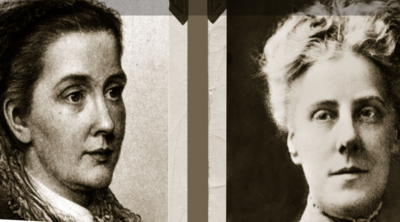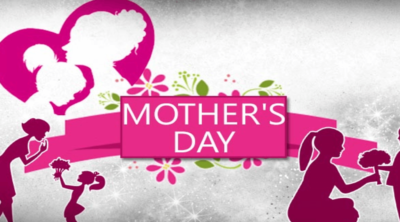
Many New Year traditions are age-old and have been molded in ways to usher in a brand new annum in the most glorious and magniloquent ways possible. Know about some of the most interesting traditions on new year that are followed around the world in this article.
Should auld acquaintance be forgot,
And never brought to mind?
Should auld acquaintance be forgot,
And auld lang syne!
[Chorus]
For auld lang syne, my dear,
For auld lang syne,
We’ll tak a cup of kindness yet,
For auld lang syne!
And surely ye’ll be your pint-stowp,
And surely I’ll be mine,
And we’ll tak a cup o’kindness yet,
For auld lang syne!
We twa hae run about the braes,
And pou’d the gowans fine;
But we’ve wander’d mony a weary fit,
Sin’ auld lang syne.
We twa hae paidl’d in the burn,
Frae morning sun till dine;
But seas between us braid hae roar’d
Sin auld lang syne.
And there’s a hand my trusty fiere!
And gie’s a hand o’ thine,
And we’ll tak a right guid-willie waught,
For auld lang syne.
― Auld Lang Syne by Robert Burns, Scottish rural poet and song-maker
Literally meaning “for old times’ sake”, the strains of “Auld Lang Syne”, a Scottish song rewritten in 1788 and posthumously published after the poet’s death in 1796, can still be heard as the clock hands near the midnight mark on New Year’s Eve, in almost all English speaking countries. The gathering of Scots dwelling in London, outside St. Paul’s Church to sing the modern rendition of the age-old folk song is still a common sight even today which makes it one of the most loved new year traditions. People also come together at Trafalgar square, Piccadilly Circus, and around the Big Ben to hear the bells that usher in the new year. They also join hands and sing the song out loud.
It has become so integral part of New Year’s Day that citizens of the United States see it as the first indicator of the advent of the new year, even if the clock signaled midnight before the song goes on air.
Popularized by Guy Lombardo and His Royal Canadians, in the year 1929, where Lombardo crooned the song at Hotel Roosevelt as the clock struck 12. That night a custom was birthed in New York City for the Americans, which made the song a regular on the radio and then television at the onset of every New Year’s Day at midnight until 1978, with “Happy New Year, America” replacing it on the CBS in 1979 till 1995. Waldorf Astoria mandatorily played it every New Year’s Eve until 1976. Amazingly, Lombardo too, had heard the song in Ontario, his native place in London, where too it was relayed for the domicile Scots in Britain.
Hooked are you? Wish to learn about some more, new year traditions and customs? Read on and get mesmerized!
Popular Traditions
Resolutions Galore
Welcoming a new year without making any resolution is nearly an impossible phenomenon. Even those who do make any resolutions, end up making the resolution of not making any resolution!
So people all around the globe knock themselves out with making new resolutions, the most popular ones being those related to weight loss and giving up on smoking and drinking. How many people actually stick to them is another story altogether.
The tradition of coining New Year’s resolutions probably has its roots back in 153 BC, when the Romans named the first month of the calendar after the ancient mythical king with two heads, called Janus.
Janus had two heads, one in front and one at the back, and so it is kind of symbolic as in being able to look back at the past and also towards the impending future at the same time. Thus, similarly the Romans looked back the past year on New Year’s Eve reflecting upon what required mending and sought to resolve differences with enemies. They also looked forward to a better year and restored strained relations by exchanging presents and thus Janus was officially the first symbolic initiator of resolutions.
Even Christians came to utilize the first day of the year as a day for past reflection and repentance as well as coining ways to mend transgressed conducts.
Then came Babylonia, where people took to making New Year promises where they honestly resolved to return all the farm instruments that they borrowed during the previous year. In present day France, New Year’s Day is called the le Jour de l’An families, friends, and relatives actually sit together and share the goals that they wish to attain in the coming annum. The Russians aim to start a debt-free year.
The Luck of the Babies
Circa 600 BC, the Grecians started to believe that the presence and pampering of a baby on New Year’s Day can bring them good luck. So, the practice of going around with a young infant in a basket in order to symbolize the annual rebirth of the deity of agriculture, Dionysus, with every good harvest became popular among the Greeks, and the baby symbolized fertility and future good yields.
Even today in Greece, it is a belief that the first person who steps into a household is supposed to be the bringer of good luck, therefore, people want it to be a lucky child to topple over the threshold. A lucky child is someone who is blessed enough to have both her parents alive.
On New Year’s day, children also go caroling around the blocks. This practice is also prevalent in modern England, where kids are encouraged to wake up early and roam around the block, and gather mince pies, coins, candies, and apples for singing by the residents of the block. But, they are supposed to wrap it up by noon or are dubbed as fools! In Japan, kids receive tiny presents with money inside called otoshidama.
The Church also accepted the ritual of celebrating the child as a symbol of the birth of baby Jesus, after initially stigmatizing it as a pagan symbol. As for the Americans, they obtained the belief that a newborn baby is the symbolic representation of a New Year from the Germans in the 1300s and have gladly retained the custom till date.
Given that early Egyptians used a child as a symbol of the renascence, even today young boys and girls are given colorful candies with vibrant wrappers, in the shapes of a man riding a horse and a woman in a dress, respectively. Accordion-shaped candies are also distributed.
A Tall, Dark, and Handsome Visitant
The old Scottish celebrations of Hogmanay has a very important custom of the “first-footing” wherein the people drop in at places of neighbors and friends, bringing them coal, rich and thick butter cookies, and other gifts shortly after midnight. It is considered especially lucky if a tall, dark, and handsome man is the first one to cross the threshold of a house.
In America, a visitor with tall frame and dark hair ushers in good luck just after the chimes of the New Year have been rung. In Greece, it can be the man of the household who enters his house just after midnight.
The Night of the Bell Tolling
In Japan, the Joya no Kane or the ‘night-watch bell’ is tolled exactly 108 times in order to purge all humans from the 108 earthly and materialistic greeds and desires that weakens and plagues the human soul, censured by Buddhist principles, during the oshogatsu or new year.
A Vision Full of Light
The bursting of firecrackers is a very common tradition at the onset of a new annum. Elaborate and fancy firecracker shows are organized throughout the globe and people gather in hundreds to see them. The Brazilian Praia de Copacabana fireworks show is one of the best shows in the world, along with those held near the Eiffel Tower in Paris, in London, and Iceland.
The people of Iceland also arrange for huge bonfires that are left blazing throughout the night all over the country, while Indonesians cannot fathom of a New Year’s celebration without the trumpet and firecrackers. While the Dutch set their Christmas trees ablaze along with other crackers in an effort to drive away the evil spirits of the past and warmly invite the good spirits in their abodes in the coming year, the English until the early 1900s lighted up hawthorn bushes with straws, in the wheat fields, in Radnorshire and Herefordshire early on New Year’s Day. This was believed to shower luck on them. Many kitchens allowed these bushes to adorn the walls until the next year when the farm-helpers would again awaken pre-dawn and repeat the custom by dragging a bush to the fields.
South Americans burn dummy scarecrows filled with hay and firecrackers at the stroke of midnight to signify some evil, that had plagued them in the past year, is reduced to ashes. This is a very important custom of their Año viejo New year traditions. In Suriname, special crackers called paragas, which are actually red-firecracker-ribbons, are set afire.
The Tournament of Roses
Celebrated for the first time in 1886, by the Valley Hunt Club in California, the Tournament of Roses Parade in Pasadena was initiated to lionize the maturation of orange crops. The parade has a unique show of innovative floats going up as a part of the celebrations. The Rose Bowl football match, that is still played today, was started only in 1902. Even though Roman chariot races did replace it for some years, football returned in 1916 on public demand.
The Ball Dropping
Every year, sharp at 11.59pm on December 31st, a humongous Waterford Crystal ball weighing 5,386 kg, with a diameter of 3.7 m is dropped from Times Square, in New York, and it reaches the ground exactly in 60 seconds, sharp at midnight. A custom that was started back in 1907, when it was late by 1 second and made of wood and iron, weighed only 320 kg. Today this celebration draws thousands of people to the site.
Over the years, lots of experimentation has been done with the look of the ball, with an apple with crimson bulbs and a green stem replacing the ball in 1981, given that the city is sometimes referred to as “big apple”. This ball is believed to remain in its position as a permanent fixture at the Times Square.
The Days of the Saints
New Year’s Eve in France and Italy is la Saint-Sylvestre and Notte di San Silvestro, meaning the night of Saint Sylvester. The French host elaborate feasts, dedicated to the Saint, called Le Réveillon de la Saint-Sylvestre, with champagne and duck and goose delicacies. It is widely observed in the country as a part of New Year’s Eve events.
New Year’s day is dedicated to St. Basil in Greece, wherein a cake called St. Basil’s cake or Vasilopita is baked with a silver coin placed in its interiors. When cut, the first piece goes to St. Basil, the next one to the house, the third one is given to the eldest member of the family, and so on. Pieces are even secured for members who are not present during ceremony. The order of distribution is never disrupted or changed, with slices being given to pet animals and farm beasts as well. As for the coin, whoever finds it is said to be blest for the next one year.
St. Basil was a generous and a philanthropic priest of the Greek Orthodox Church, known for his love for the downtrodden and underprivileged. 1st January is his death anniversary, and thus, dedicated to his reverence.
Unusual Customs
Don That Underwear
As unusual as it seems, in some countries, donning a particular color of underwear in New Year is said to have positive effects on people’s lives.
In Spain and Italy, red underclothes supposedly attract good luck. Whereas in Ecuador and Venezuela, yellow underwear does the trick. In Mexico, yellow underwear fills up the coffers with money. Venezuelans and Mexicans also believe that red underwear brings love if worn on New Year’s Eve. How true these superstitions are? Well, Indulge and check.
Choose a Color
According to several traditions, color plays an important part in predicting how your life will be in the coming year.
In Mexico, it is believed that yellow color will bring good news and improvement related to job and career, white will bring in good health, green will bring financial stability, and of course, red stimulates love and romance. With this belief, many Mexicans, color their homes in the wishful color.
Pack the Suitcase
Ecuadorians and Venezuelans have an accepted belief that if they go around the block with a packing case at New Year’s Eve midnight, they shall be blessed to embark upon the journey of their dreams in the coming year.
Call for the Hunk
Ancient New Year traditions involved Grecian maidens consuming salty eatables just before going to sleep on New Year’s Eve as it was accepted that doing so would rouse dreams showing their future life partners. English maidens on the other hand would splatter egg whites on water surfaces in an attempt to see the letter formation, indicative of the initials of their future husband.
Lead Our Future
An ancient custom among the Germans which is still practiced during the New Year’s Eve. As per this tradition, the family would collectively place their hand on the container holding molten lead and gently tilt the content into a tub of cold water. The shape created by the mold would foretell the family’s future for the coming year. The shape of a pig would represent no dearth of food and wealth, while a boat or ocean would signify travel prospects. Ring shaped designs could lead to marriages in the family, etc.
Count Your Friends Among Broken Glass
In Denmark, it is not unusual to see doorways of houses littered with piles of broken dishes. It is an old belief that states that the number of broken dishes equals the number of friends one is blessed to have. The more friends the better, which is why people there spend all year preserving their broken dishes.
Food Traditions
New Year’s traditions vary from place to place, and therefore, food traditions are bound to be different depending on the country.
In the United States, it is a common notion that ‘Eat peas on New Year’s day to have plenty of everything the rest of the year’. So, black-eyed peas are consumed by families all over the country. The rice and field peas concoction of Hoppin’ John is also widely eaten among most Caribbean families. Similarly, the Dutch and the Danes too, believe that anything round in shape symbolizes and attracts lady luck as a circular chassis signifies life coming to a full circle. So, they have donuts and marzipan ring cakes called kransekage. The French satiate their sweet urges with ice cream log wrought pastries, while the Greeks eat spirally fried honey pastries or thiples and melt-in-the-mouth cookies called kourabiedes to their heart’s content.
Pork is considered to be a mark of prosperity and thus is consumed by Philippians in the roasted form of Lechón, and Danes eat the saddle of the hog. The Danes also eat up on cabbage stews as cabbage leaves, reminiscent of green currency notes, are believed to bring in more cash in the household with the auspicious oncoming of a new year. Likewise, the Germans gorge on the lean fish of carp to stock up on the stash. They also continue eating and filling up their plates from dinnertime into the midnight as they believe that this will ensure a full larder next year.
The Spanish, Mexicans, and Ecuadorians gobble down 12 grapes with each dong of the clock indicating midnight. They believe that a wish made with each grape usually comes true. In fact so much faith do the Spaniards have on this practice that theaters actually pause movies to make way for this practice. Wine is also gulped down with the grapes to make the swallowing easier. Rice and lentils are also eaten for luck by many, especially Brazilians and Italians, for good fortune.
Alcoholic drinks are also widely shared among friends and family on New Year’s Eve feast. The Spaniards indulge in pink or white sparkling native wine called cava, cider or even champagne. The Dutch too are deep drinkers and enjoy their Glühwein or mulled wine as the clock hands touch 12.
So here I leave you to think about all these traditions and hope your New year shall be a glorious one. Among other things, as people kiss each other and travelers honk their car horn at midnight. The most important part of New Year celebrations is to be with your loved ones mentally and emotionally and thank the almighty for all the joys He has showered upon us. That is the greatest gift we already have on the day Jour des Étrennes or the day to exchange gifts.


